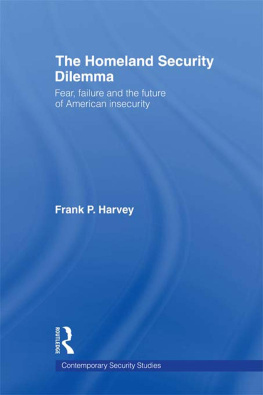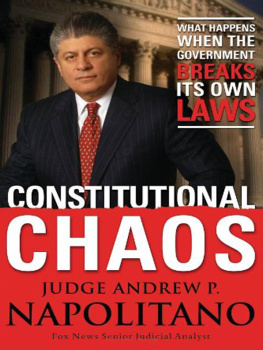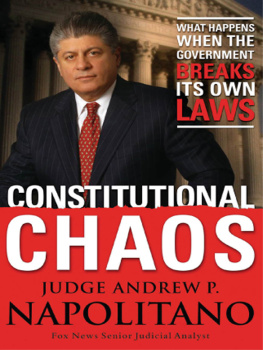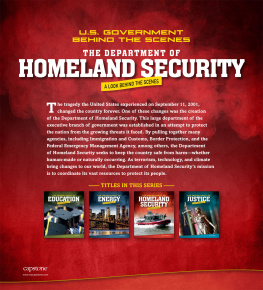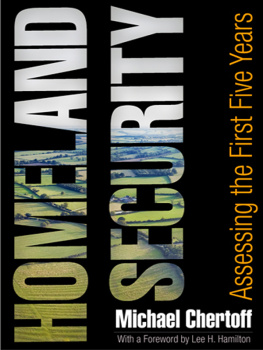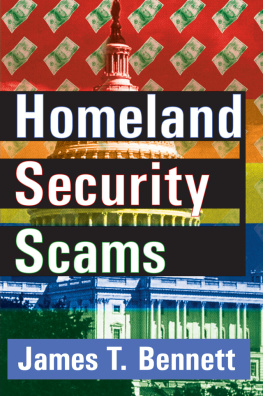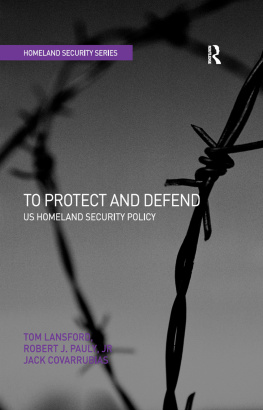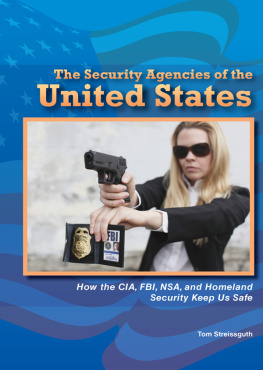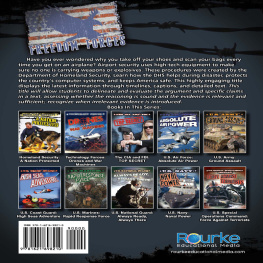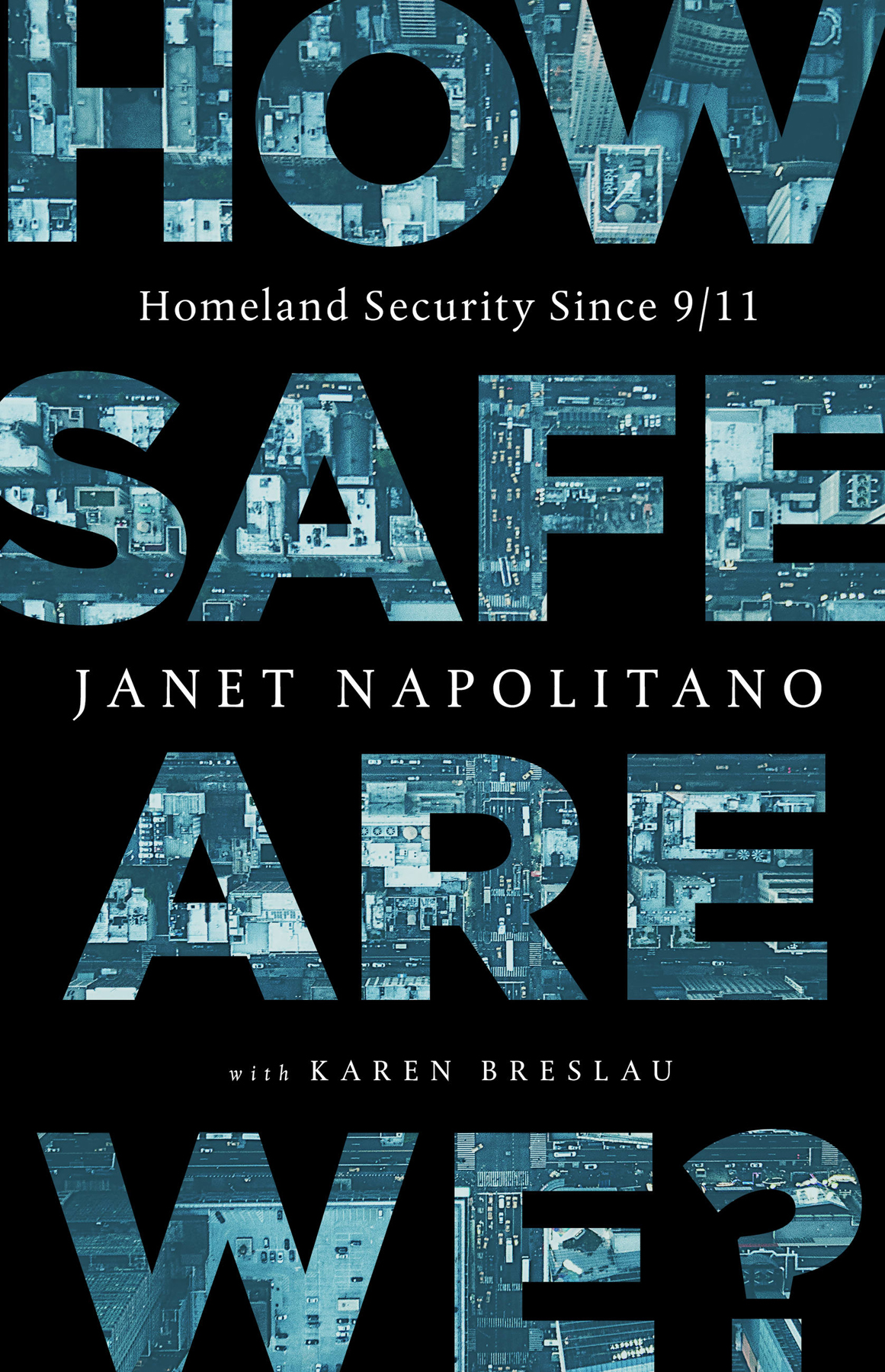Copyright 2019 by Janet Napolitano
Cover design by Pete Garceau
Cover image iStock / Getty Images
Cover copyright 2019 Hachette Book Group, Inc.
Hachette Book Group supports the right to free expression and the value of copyright. The purpose of copyright is to encourage writers and artists to produce the creative works that enrich our culture.
The scanning, uploading, and distribution of this book without permission is a theft of the authors intellectual property. If you would like permission to use material from the book (other than for review purposes), please contact permissions@hbgusa.com. Thank you for your support of the authors rights.
PublicAffairs
Hachette Book Group
1290 Avenue of the Americas, New York, NY 10104
www.publicaffairsbooks.com
@Public_Affairs
First Edition: March 2019
Published by PublicAffairs, an imprint of Perseus Books, LLC, a subsidiary of Hachette Book Group, Inc. The PublicAffairs name and logo is a trademark of the Hachette Book Group.
The Hachette Speakers Bureau provides a wide range of authors for speaking events. To find out more, go to www.hachettespeakersbureau.com or call (866) 376-6591.
The publisher is not responsible for websites (or their content) that are not owned by the publisher.
Library of Congress Cataloging-in-Publication Data
Names: Napolitano, Janet, author. | Breslau, Karen, author.
Title: How safe are we? : homeland security since 9/11 / Janet Napolitano with Karen Breslau.
Description: First edition. | New York : PublicAffairs, [2019] | Includes index.
Identifiers: LCCN 2018044613 (print) | LCCN 2018054195 (ebook) | ISBN 9781541762213 (ebook) | ISBN 9781541762220 (hardcover)
Subjects: LCSH: Napolitano, Janet. | United States. Department of Homeland Security. | National securityUnited States. | Internal securityUnited States. | TerrorismUnited StatesPrevention. | United StatesPolitics and government1989
Classification: LCC HV6432.4 (ebook) | LCC HV6432.4 .N36 2019 (print) | DDC 363.34092 [B]dc23
LC record available at https://lccn.loc.gov/2018044613
ISBNs: 978-1-5417-6222-0 (hardcover); 978-1-5417-6221-3 (ebook)
E3-20190206-JV-NF-ORI
For my family and for my friends, who have often acted as a supplemental family. (You know who you are.) For all the colleagues I have had the privilege of working with during my years in public service. It has been my honor to serve alongside you. And finally, for the American people, whose spirit never ceases to amaze and inspire me.
Like most Americans of a certain age, I remember exactly where I was and what I was doing when our country was attacked on the morning of September 11, 2001. It was shortly before 7:00 a.m. in Phoenix, Arizona, and I was home getting ready for work when I heard on NPR that a plane had flown into one of the World Trade Center towers. The cause was being described as a possible air traffic control problem. A few minutes later, as I was drying my hair, I heard the announcement that stopped me coldthat the second tower had been hit. I knew then, along with the rest of America, that this wasnt an accident.
I was the attorney general of Arizona at that time, and the moment I heard that the second tower had been hit, I dropped my hair dryer and went into crisis mode. I called my chief of staff to activate our team and run through our plan should there be an attack on Arizona. A few minutes later, I got a call from Governor Jane Dee Hull, asking whether she had the legal authority to scramble National Guard jets to protect the states Palo Verde Nuclear Generating Station, the largest power plant in the nation. I took a beat. Its in my nature to plan for everything, to prepare for every eventuality, but there was no plan for this. I had to make a call. I told the governor that without authorization from the Pentagon, she could not activate the Guard, since it was both a federal and a state asset. By this point, wed learned that the Pentagon had also been hit by a commercial airliner and was in flames. There would be no answer from Washington that day.
As a high-level state government official, the near silence from the federal government was eerie. In the chaotic first hours after the attacks, President George W. Bush was aboard Air Force One, flanked by F-16s, as he was flown from one military base to another, unable to communicate reliably with his cabinet, leaders of Congress, or the American people. With the president out of the public eye for the moment, New York City mayor Rudolph Giuliani emerged for many as the face and voice of the government response on that first day and the days that followed. In that task, he performed admirably.
Everyone was scrambling to understand what was happening, including cabinet secretaries, governors, mayors, police chiefs, first responders, the media, and, of course, the American public. People were terrified, wondering what could happen next and where to get reliable and actionable information. It wasnt until I got home late that night and watched people jumping from the burning towers on television that the impact of the day hit me. As I numbly watched endless video loops of office workers plunging to the ground to avoid being consumed by flames, I could only think about what horrors they must have been faced with to make the decision to jump. Those images remain seared in my memory to this day, as they do for many of us.
We will soon observe the twentieth anniversary of the Tuesday that transformed our nation so profoundly that it is known most commonly by its date: 9/11 (like December 7, 1941, Pearl Harbor, or November 22, 1963, the assassination of President John F. Kennedy). The 9/11 attacks changed the way we fly, protect our borders, investigate crime, and gather government information. They changed the way we organize the federal government itself, the economy, and even the way we watch the news on television. (The nonstop news ticker screen crawl was born to handle the torrent of information that day.) The 9/11 attacks shook the American psyche too, in ways that continue to reverberate. It had been nearly sixty years since the Japanese bombed Pearl Harbor, and for the first time in the lives of most Americans, we had to struggle with the realization that we were no longer safe from attack by a foreign entity within the borders of the United States. This altered our expectations of what our government can and cannot do for us. It affected our politics; it challenged our conception of ourselves as the worlds most open society.
Its been nearly two decades since 9/11, and I believe its time to take stock of those changes, to identify which policies that were put in place back then still work and which ones need to be fixed. In those early days after the attacks, decisions were made and laws were passed that were the result of fear, lack of information, and often a sincere desire to ensure that kind of attack would never happen again. Its time to look at those decisions in light of the country we are today and to address the new threats that have arisen in the nearly two decades since the attacks.
Think of this book as an American report card. What has worked and what has not? What are the social, political, and economic costs of that progress? Where are our biggest vulnerabilities today, and how do we repair them? What are the risks we must accept if we are to remain a free and open society? What should government do for us, and what must each of us do for ourselves and our neighbors in the event of emergency? Most importantly, are we safer and more resilient today than we were on September 11, 2001?


